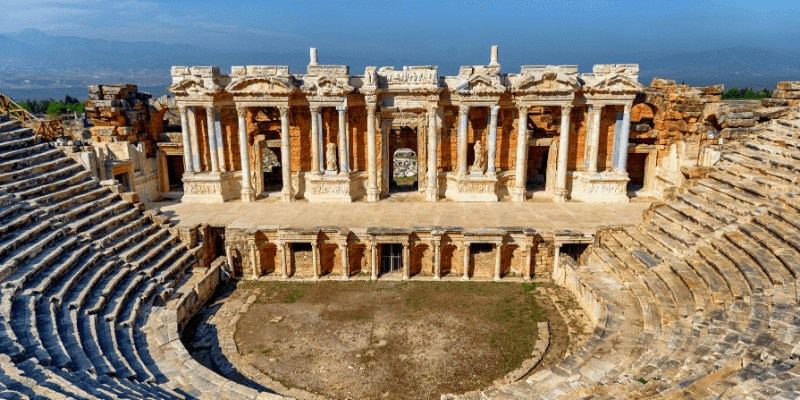
Hierapolis is an ancient city located in southwestern Turkey, near the modern city of Denizli. It is renowned for its well-preserved ruins, historical significance, and the thermal springs that have attracted visitors for centuries. Here are some key features of Hierapolis:
Historical Significance: Hierapolis was founded in the 2nd century BC by the King of Pergamon and became a thriving Hellenistic and Roman city. Its strategic location along trade routes contributed to its growth and importance.
Theater: One of the most impressive structures in Hierapolis is its ancient theater, which could accommodate thousands of spectators. The theater is well-preserved and offers panoramic views of the surrounding landscape.
Necropolis: Hierapolis is famous for its extensive and well-preserved necropolis, or cemetery. The necropolis features a large number of tombs and sarcophagi, reflecting various architectural styles from different periods.
Plutonium: The city is home to an ancient religious site known as the Plutonium, believed to be an entrance to the Underworld in ancient times. The site emits toxic gases, and it was associated with rituals involving the god Pluto.
The Arch of Domitian: Erected in honor of the Roman Emperor Domitian, this monumental arch is another well-preserved structure in Hierapolis.
Pamukkale: Hierapolis is closely associated with the famous natural wonder of Pamukkale, a terraced hillside with white mineral-rich thermal waters. The calcite-laden waters form cascading terraces and pools, creating a visually stunning and unique landscape.
Roman Bathhouses: The city boasts well-preserved Roman bathhouses, including the Domitian Baths, where visitors can explore the layout and architecture of the ancient bathing complex.
Museum of Hierapolis: The Hierapolis Archaeological Museum displays artifacts and sculptures from the excavations of Hierapolis, providing visitors with a deeper understanding of the city's history and culture.
Ancient Streets and Gates: The city features ancient streets, gates, and remnants of a once-thriving urban center, allowing visitors to envision the daily life of its inhabitants.
Sacred Pool: Within the archaeological site, there is a thermal pool known as the Sacred Pool or Cleopatra's Pool. It is believed to have healing properties, and visitors can swim among ancient ruins.
Hierapolis is a UNESCO World Heritage Site, and its combination of historical ruins, natural beauty, and therapeutic waters make it a popular destination for tourists and history enthusiasts alike.




